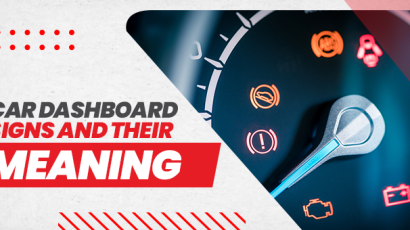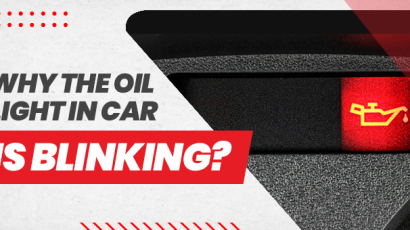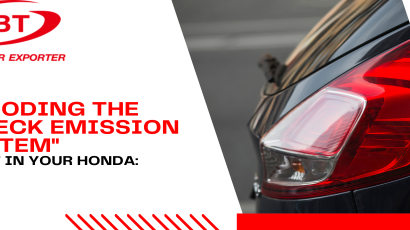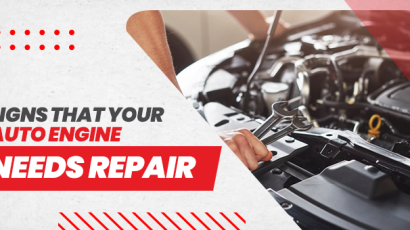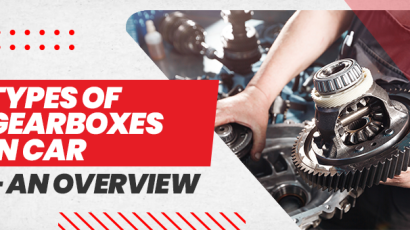
Ever been cruising down the highway when your once-responsive car sputters, loses power, and illuminates a cryptic warning light on the dashboard? You’ve likely entered limp mode, a safety feature built into modern vehicles. While it might feel frustrating, the limp mode is actually your car’s guardian angel.
Limp Mode Meaning
Limp mode, also known as safe mode, is a deliberate reduction in engine power and performance. This occurs when the car’s computer (ECU) detects an issue that could potentially damage the engine, transmission, or other vital components. The limp mode helps you move the automobile to a safe place for repairs by cutting power and functioning, averting additional damage.
Common Causes of Limp Mode (and How to Identify Them)
A number of things can cause limp mode. The most frequent offenders are listed below:
Engine Issues: Faulty spark plugs, malfunctioning sensors (like oxygen sensors or mass airflow sensors), or problems with the ignition system can cause limp mode. The check engine light going on, a choppy idle, or reluctance when accelerating are possible symptoms.
Transmission Problems: Another question is: will low transmission fluid cause limp mode? Low transmission fluid, a failing torque converter, or internal transmission wear can activate the limp mode. As a result, you may face difficulty shifting gears, experience slipping transmissions, or a burning smell.
Emission Control System Malfunctions: A faulty catalytic converter, clogged EGR valve, or problems with the emissions sensors can trigger limp mode. Along with the activation of limp mode, you can notice a drop in fuel economy or a strong exhaust odor.
Overheating: If your engine coolant temperature rises excessively, the car might enter limp mode to prevent overheating damage. Keep an eye on your temperature gauge!
How to Bypass Limp Mode: A Temporary Fix, Not a Solution
It is important to realize that limp mode is not intended to be a permanent condition, even if it can be annoying. Here are a few ways to temporarily bypass limp mode and get your car to a mechanic:
Turn the Car Off and On: Sometimes, a simple engine restart can reset the ECU and clear the limp mode. However, if the underlying issue persists, limp mode will likely return.
Check Fluid Levels: Low engine oil, coolant, or transmission fluid can trigger limp mode. Top up the fluids as needed, but remember, low fluid levels often indicate a leak or other problem requiring professional attention.
Disconnect the Battery (with Caution): The ECU may be reset by unplugging the battery terminal for a short while, which may remove limp mode. However, this method can erase stored trouble codes, making diagnosis more difficult later. It’s also important to consult your car’s manual before attempting this, as some vehicles have sensitive electronics that can be disrupted by a battery disconnect.
Important Note: Bypassing limp mode is a temporary solution to get you to a safe location. It doesn’t fix the underlying problem, and driving in limp mode for extended periods can cause further damage.
Diagnosing and Fixing the Root Cause: How to Fix Limp Mode
The key to permanently “disabling” limp mode lies in identifying and addressing the issue that triggered it in the first place. This usually involves a visit to a qualified mechanic. Here’s what you can expect:
Diagnostic Scan: The mechanic will utilize an OBD-II scanner to read the trouble codes recorded in the car’s computer. These codes offer insightful hints on the problem’s origin.
Inspection and Repair: Further, based on the scan results and a physical inspection, the mechanic will diagnose the specific problem and recommend repairs. This might involve replacing faulty sensors, topping up fluids, fixing leaks, or performing more complex repairs, depending on the issue.
Why Disabling Limp Mode Permanently is a Dangerous Myth
There’s a misconception among some drivers that permanently disabling limp mode is possible or even desirable. This is a dangerous myth. Here’s why:
Increased Risk of Engine Damage: Limp mode exists to protect your engine from serious damage. Deactivating limp mode and ignoring the warning indicators might cause a catastrophic engine failure that necessitates costly repairs or even engine replacement.
Transmission Woes: Similar to the engine, limp mode safeguards your transmission from overheating or excessive wear. Disabling it could lead to a burnt-out transmission, a costly repair down the line.
Safety Hazards: Moreover, limp mode often limits your car’s speed and performance. Disabling it could make your car unsafe to drive, especially on highways or in heavy traffic.
Preventive Maintenance: Your Best Defense Against Limp Mode
Preventive maintenance is the greatest approach to avoiding limp mode’s inconveniences and possible risks. To maintain your automobile operating smoothly and avoid activating limp mode, follow these important tips:
Regular Servicing: Follow your car manufacturer’s recommended service schedule. This covers routine maintenance such as spark plug replacement, fluid level checks, filter replacements, and oil changes. Frequent maintenance assists in identifying small concerns before they become more significant difficulties.
Monitor Fluid Levels: Additionally, make sure the levels of the gearbox, coolant, and engine oil are all periodically checked. Low or contaminated fluids may trigger the limp mode. Use the dipstick to check oil levels and consult your car’s manual for proper fluid types and capacities.
Listen to Your Car: Moreover, pay attention to unusual noises, vibrations, or changes in performance. These can be early signs of trouble that could lead to limp mode if left unchecked.
Warning Lights Matter: Don’t ignore illuminated dashboard warning lights. The purpose of these lights is to warn you of possible issues. Deal with them right away to avoid more problems.
Quality Parts Matter: Lastly, when replacing parts during repairs, use high-quality components that meet your car manufacturer’s specifications. Substandard parts can malfunction and trigger limp mode.
While this article focuses on limp mode and its causes, it’s important to note that used Japanese cars are renowned for their reliability and durability. If you’re looking for a dependable vehicle, consider exploring reputable dealerships for used Japanese cars for sale, like SBT Japan, which prioritizes quality and offers warranties for added peace of mind.
Conclusion: Limp Mode – A Friend in Disguise
The limp mode might seem like an unwelcome guest in your car, but remember, it’s there for your car’s (and your) safety. By understanding its purpose, the various causes, and the importance of proper diagnosis and repair, you can ensure your car stays healthy and avoids the dangers of permanently turning off this crucial safety feature. Prioritize preventative maintenance and listen to your car’s warning signs. After all, a happy car is a car less likely to enter limp mode!
Looking for a top-quality used Japanese car at an unbeatable price? Check out our selection of used cars for sale in South Africa at SBT Japan! We offer a vast inventory of over 9,000 vehicles from over 30 manufacturers, all meticulously inspected and guaranteed to meet your standards. Enjoy the peace of mind of worldwide shipping and exceptional customer service. Search by make, model, or browse our weekly specials. Don’t settle for less—drive away happy with a trustworthy used car from SBT Japan. Visit our website today!






